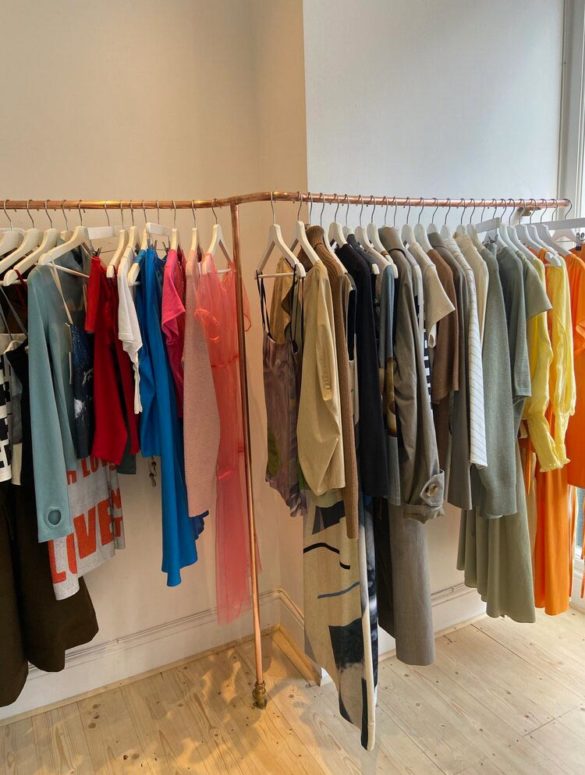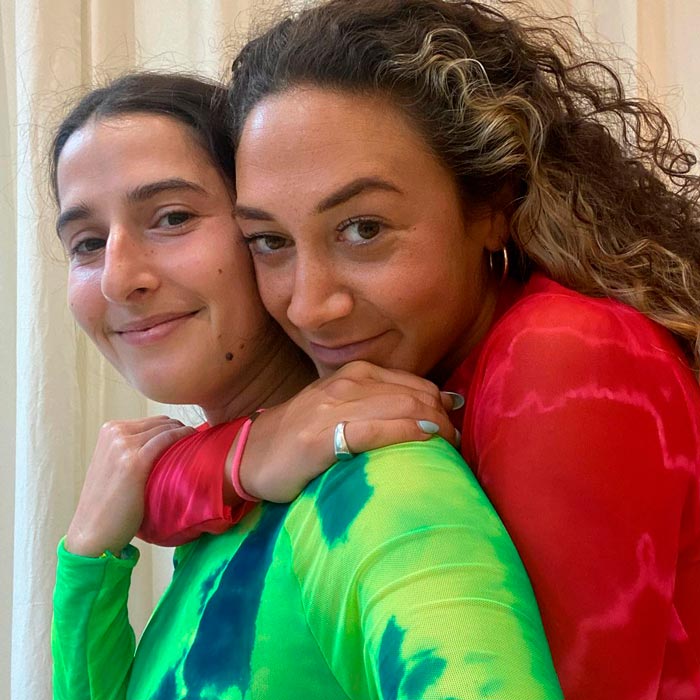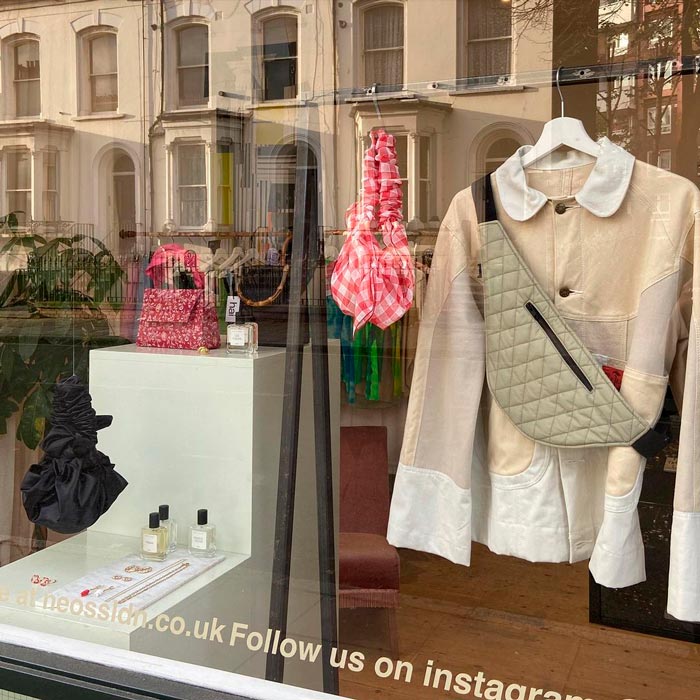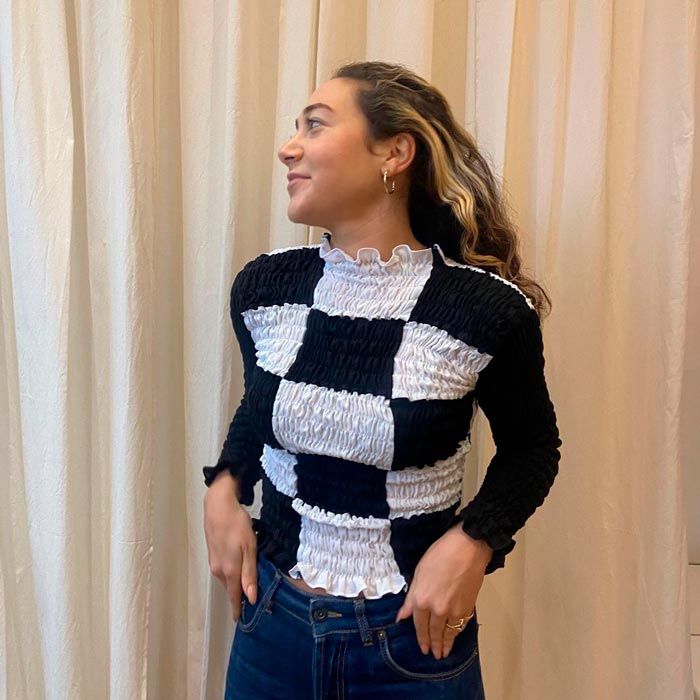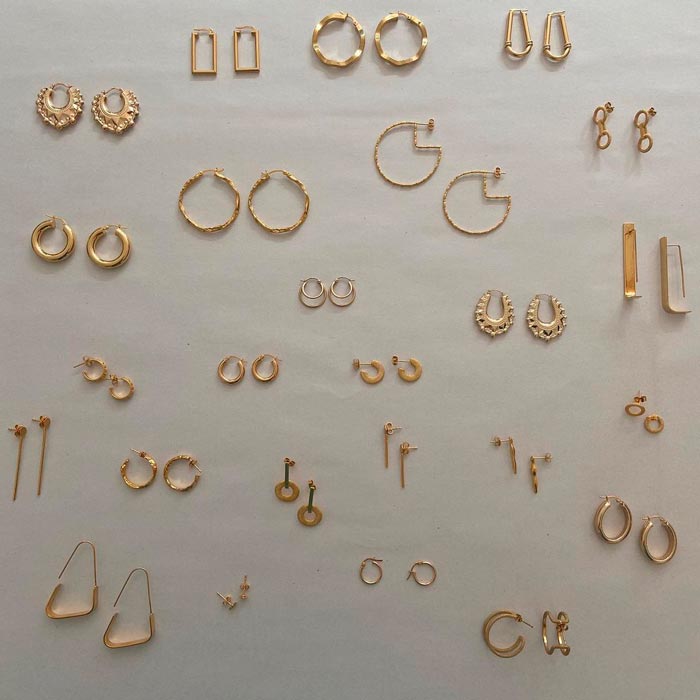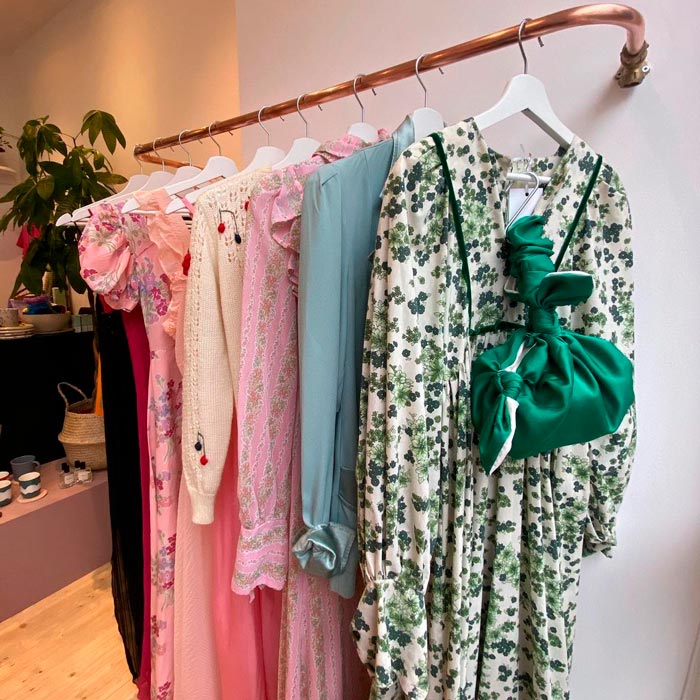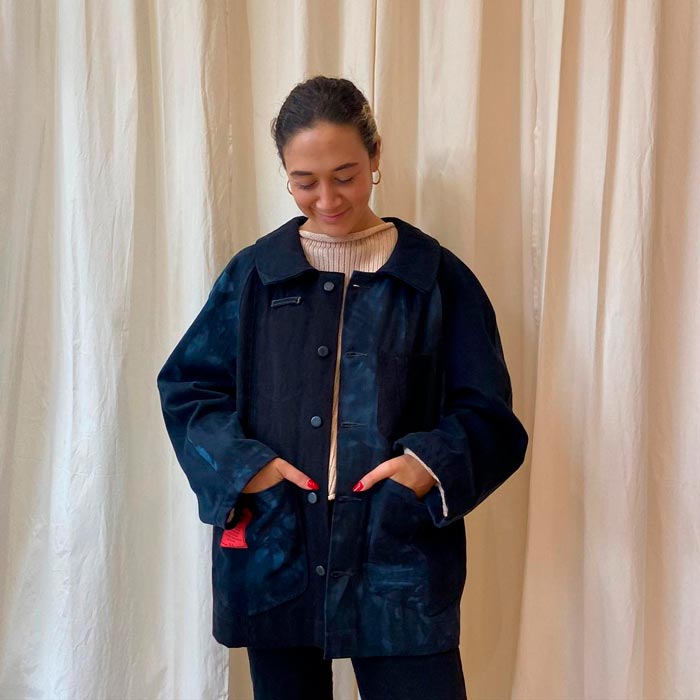Isabel had a chat with Georgea Charlambous, co-founder of inNEOSS alongside Natalie Bouloux.
All images have been sourced from InNEOSS’ pastel and earthy-toned Instagram profile
In the ongoing fashion debates around sustainability, consumers are urged to consider what they buy, but less so the how. As been cited by sustainable fashion experts, the “explosion of small” is “vital to the growth and maintenance of the sustainable fashion movement,” and I would argue that the work that small, e-boutiques do is vital for offering an alternative to mass fashion distribution.
As mainstream online and physical retailers react to increasing sustainable fashion demands—which more recently include the 15 percent pledge to stock black-owned brands and debates around size inclusion alongside environment and labour-related demands—we must reconsider a vital part of the fashion system: how it is sold. A large portion of the sustainable fashion conversation currently centres on how clothing and accessories are made and how little or much people are told to consume them. But how it is distributed has not yet been questioned in a bigger conversation.
Behemoth retailers that exist today are the legacy of the dominating department stores, which emerged in Western fashion capitals at the turn of the 20th century. The emergence of department stores like Le Bon Marché in Paris came about to provide an efficient way to sell the increasingly mass-produced items being made in factories, which served to centralise shopping as an activity for the leisure class. They formed consumer classes, further gendering consumption as a feminine activity because department stores were among the few places that (upper class, white) women could roam freely in Western city centres, eventually entrenching this history in contemporary tourist culture.
As online shopping formed the future for retail, we got multi-brand luxury e-tailers, proudly housing thousands of products from global fashion companies. This luxury mass market power turned these retailers into major gatekeepers of fashion, often making or breaking the careers of emerging designers and brands. For consumers, instead of flocking to physical sites of consumption, they built online ones by photographing the boxes and bows of the packages that arrived directly at their door.
Like the rise of made-to-order fashion in digital spaces, the increase of small-scale e-boutiques harkens to pre-Capitalist modes of fashion. And as fashion moves forward in highly localised worlds of lockdowns, the boutique business model offers an alternative to mass fashion distribution that can match local demands. They might not have everything for everybody, but instead offer exactly what a select customer base is looking for. Just as small brands can build consumer communities outside of the capitalist fashion model, e-boutiques support and build communities around those same values.
I spoke to Georgea Charlambous from London-based boutique, inNEOSS, who have both a physical shop in East London and a strong Instagram community and digital store, about the business model she built with her co-founder, Natalie Bouloux. Their model allows them to stock small, unknown brands alongside vintage pieces and Instagram cult buys. They often model the pieces on themselves, in their shop and are easily contactable through their Instagram DMs. Their independence also allows them to be reactive to the cultural and political climate: posting support for political justice is not a corporate decision but a human one. I spoke to Georgea about how they re-built small-scale distribution in the digital era. Here’s our interview.
Isabel Mundigo-Moore
Georgea Charlambous
Originally you were a fashion brand of your own (NEOSS) and now you also run a shop and e-boutique. How did that happen?
We struggled getting exposure for our own brand at the beginning, it felt like no one really had space or budget to risk on small brands. We decided that we would run our own pop-up shop alongside brands that were facing the same difficulties. Organically we sort of created a community of like-minded brands and started running pop-ups regularly.
How does your business model work and how did you shape it?
Pop-ups really helped us carve out our model. We knew there was a gap in the market for tiny brands like us, people love to see things that they don’t see everywhere else. Sustainability is weaved deeply into our foundation so that plays a huge role in how we select brands. We realised quite early on that people want newness all the time, which is obviously not sustainable, but by creating a space in which the brands rotate on a more regular basis we can keep people engaged and share our platform constantly with new designers.
We knew there was a gap in the market for tiny brands like us, people love to see things that they don’t see everywhere else.
How do you find brands to work with and build relationships with them?
Finding brands is the best part of doing this. Usually, we like to showcase brands that you can’t find anywhere else, or in limited places. This then creates a unique experience in store as well as giving young brands a chance to gain exposure. There has to be a story of sustainability within their practice and it needs to fit our aesthetic of course. The great thing about having a physical store is that you get to talk to people and we meet lots of creatives that way that we end up working with.
Georgea models a top new brand, Uants, made from deadstock fabric / A selection of the jewellery pieces available at inNEOSS
Is everyone you stock sustainable?
All the brands have a sustainable angle, but it varies from one brand to the next. For example, a few brands work with deadstock fabric while others work with natural sustainable fabrics. Most of our brands are UK based, lowering their carbon footprint. Some of our jewellers use recycled metals and beads. We have brands using natural dyes made from things they have grown in their garden! We have vintage! Sustainability is multifaceted and it’s about exploring all the avenues to make it exciting.
Sustainability is multifaceted and it’s about exploring all the avenues to make it exciting.
I know sustainability has always been a core value of own brand, NEOSS, how does that extend to running your shop?
You soon realise when you are managing things like postage, electricity suppliers, packaging, etc. sustainability is a little trickier and we are very aware that we are not perfect. We are however constantly changing things and researching ways we can improve as we grow. We do this in our responsible selection of brands, our packaging and our energy consumption! We have a very communicative relationship with our brands, so they pretty much make as we sell to decrease any chance of wastage or deadstock. Next, we are looking into who we bank with and how we can be more ethical and sustainable with that choice.
What are the benefits of a small business?
Covid aside, we get to talk to our customers directly, to understand what they want and what they respond well to. This is also incredibly beneficial when you have a shop full of products with great stories. We get to explain to customers why pieces cost what they do, where they come from and exactly who made them. And we hope that these conversations will open up discussions about where people spend their money. Being a small business also means that we can really be present with our designers, we can give them feedback about sizing, material, and customer comments.
We get to explain to customers why pieces cost what they do, where they come from and exactly who made them. And we hope that these conversations will open up discussions about where people spend their money.
How does having an online business connect you with consumers?
It’s great for us as we are a neighbourhood shop, we aren’t on a big high street and the footfall is variable. So, while we rely on passing trade it’s also such a great tool to connect with people outside the area. Instagram is probably our most used platform to reach our customers, near and far!
Your cooperative vs. competitive approach to business leaves room for small brands to support one another, why is that important?
You will find that throughout your journey as a brand/business, you will need to call on others for opinions, advice and help at some point. By creating a cooperative that encourages that sort of interaction you build a really positive community, one that lends itself to meeting and supporting people.
Isabel Mundigo-Moore (@mundigomoore) is a London-based fashion writer and theorist. She is interested in reframing narratives around sustainability, including refocusing materialism on the material, and caring about clothing as an act of love. Read all of Isabel’s pieces here.


